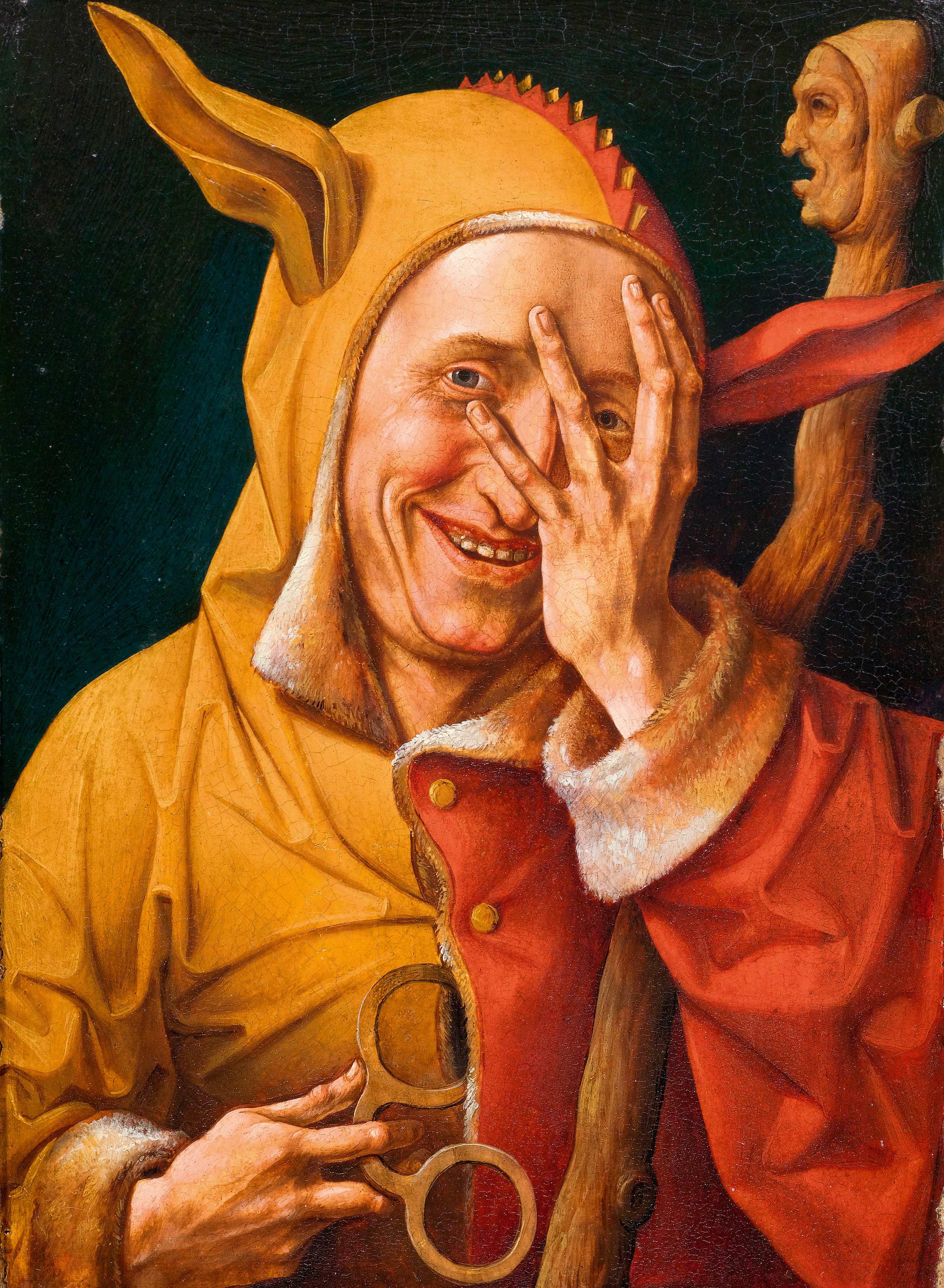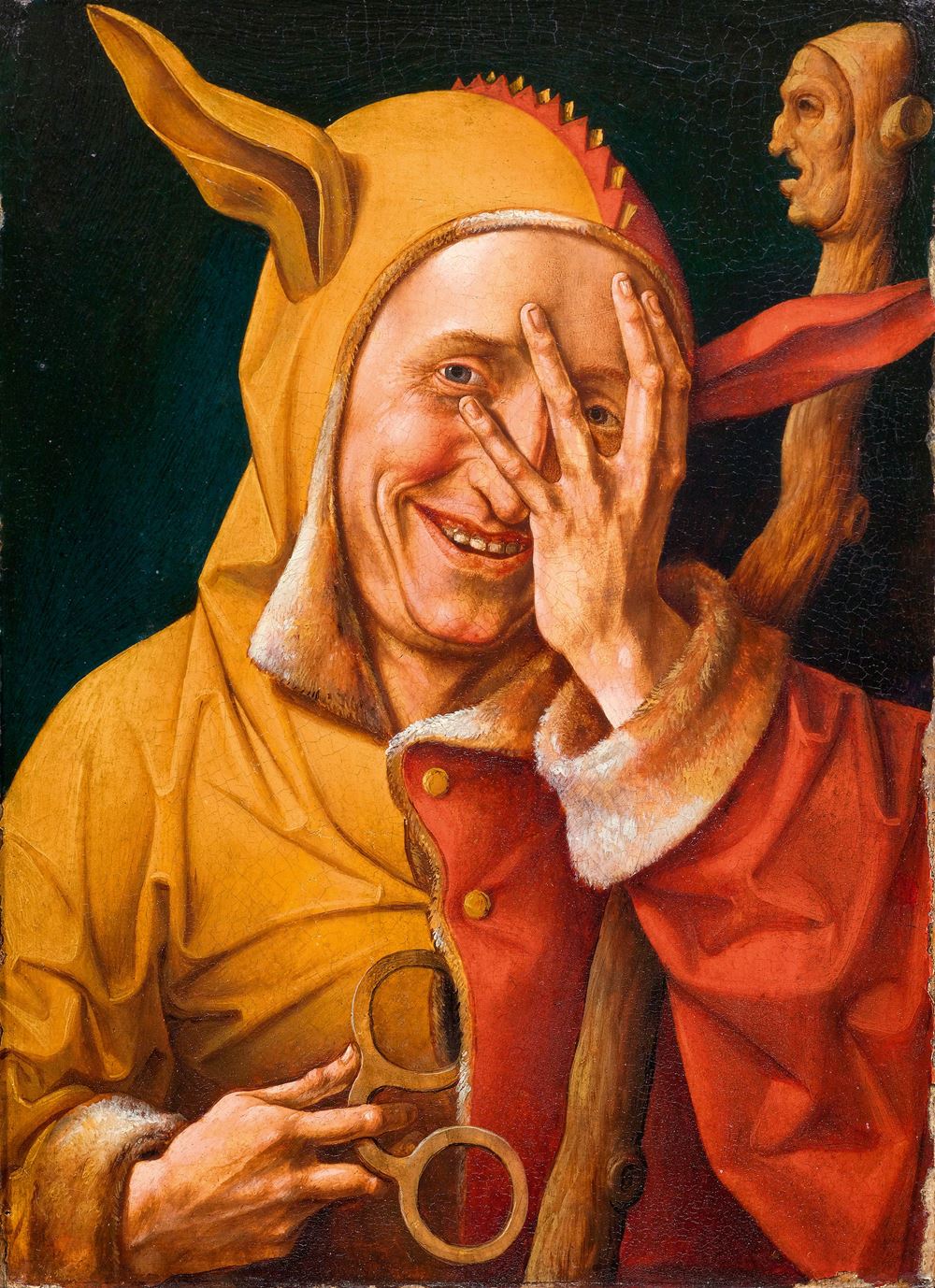Today is April 1st, so it is April Fools' Day, which is an annual custom consisting of practical jokes and hoaxes. So who else could we show today other than a jester?
Let's move to Renaissance Europe. In 1494, Sebastian Brant published The Ship of Fools, followed in 1511 by Erasmus’s In Praise of Folly. Both texts enjoyed immense popularity, cementing the fool as a central figure of 16th-century thought. Amidst sweeping political and religious upheaval, the fool emerged as a symbol of dissent, questioning the established social order through satire and subversion. His image, widely circulated in engravings, became instantly recognizable: vibrant, contrasting garments, a cap adorned with a rooster’s crest, donkey ears, and bells, along with a staff featuring his own grotesque likeness—the marotte, which he addressed as though speaking to himself.
This portrait follows the visual conventions that define the fool. Rendered in a highly realistic style, it captures intricate details, from the fur-lined elegance of his attire to his long, sinewy fingers veined with age and the expressive creases around his eyes. He also holds a pair of spectacles—another hallmark of the fool—both mocking the scholar and symbolizing a distorted perception of reality, a core theme of folly.
The image of the fool peering through his fingers was especially prevalent in the Germanic world and in the Netherlands. This gesture alludes to a common phrase in German and Dutch, referring to the act of turning a blind eye to morally dubious or even illegal behavior. Brant’s Ship of Fools references this when a husband feigns ignorance of his wife’s adultery—his own infidelity serving as justification for his willful blindness.
In the Master of 1537's portrait, the fool has also removed his spectacles, further reinforcing his refusal to see. This act of avoidance can be interpreted more broadly as excessive tolerance, leading to societal folly. A contemporary engraving echoes this sentiment with the inscription: "Nowadays, people look through their fingers—that is why everything is going wrong everywhere."
Happy April Fools' Day!
P.S. Another painting of Jester recently graced a cover of an album by Lady Gaga! And it had a very special meaning. See who’s the jester on Lady Gaga’s Harlequin cover!


 Master of 1537
Master of 1537